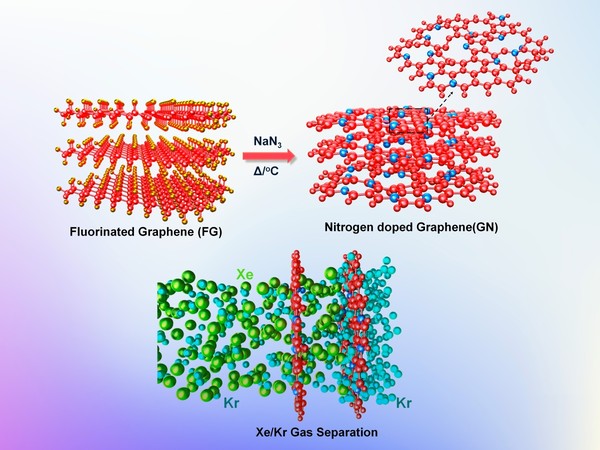A research team from Palacký University CATRIN and VSB-Technical University of Ostrava, in collaboration with the US Pacific Northwest National Laboratory and the Indian Institute of Technology Jammu, has developed an innovative approach to the separation of noble gases using two-dimensional nitrogen-doped graphene materials. This new method has the potential to significantly reduce the costs of noble gas production, potentially revolutionizing industrial processes. It also paves the way for novel medical applications, such as the storage and transport of therapeutic gases. The study was published in the journal Small.
“Thanks to our extensive experience in 2D fluorographene chemistry at CATRIN, we successfully integrated nitrogen precisely into the graphene structure. This modification has endowed the material with unique properties, including ‘nanochannels’ and varying ratios of nitrogen atoms incorporated into the graphene lattice, significantly enhancing its ability to separate xenon from krypton,” explained Veronika Šedajová, the first author of the study.
Theoretical calculations performed on the KAROLINA supercomputer in Ostrava, along with experimental data from the American and Indian laboratories, revealed that these materials exhibit up to 50% higher selectivity for xenon compared to krypton. This increased selectivity is attributed to the stronger non-covalent interactions between xenon and nitrogen within the graphene lattice, which improves the adsorption and separation of noble gases. Additionally, other variants of nitrogen-doped graphene were synthesized using environmentally friendly solvents, further refining the materials’ properties.
Noble gases like xenon (Xe) and krypton (Kr) are essential in many cutting-edge technologies, including medical diagnostics, semiconductor manufacturing, and the space industry. However, xenon is exceedingly rare, comprising only about 0.08 ppm of the Earth’s atmosphere, making its extraction both energy- and cost-intensive. Current methods, such as cryogenic air distillation, are inefficient, prompting scientists to seek new, more effective techniques for noble gas separation.
“This research demonstrates that advancements in modern materials chemistry can be key to addressing global challenges, such as the efficient utilization of scarce resources, while also supporting the sustainable development of industry and science. Notably, one of the nitrogen-doped graphene derivatives we’ve used has already found applications in areas like energy storage for supercapacitors,” concluded Michal Otyepka, a corresponding author of the study.
For more details, you can access the full study here.
